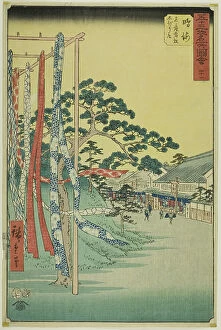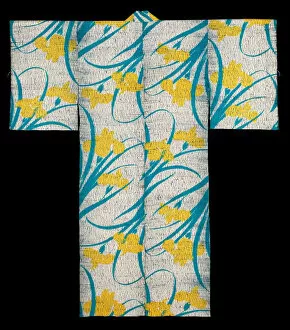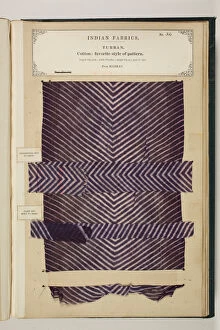Tie Dyed Collection
"Tie Dyed: A Kaleidoscope of Color and Culture" Step into a world where vibrant hues dance across fabric, telling stories of ancient traditions and artistic expression
For sale as Licensed Images
Choose your image, Select your licence and Download the media
"Tie Dyed: A Kaleidoscope of Color and Culture" Step into a world where vibrant hues dance across fabric, telling stories of ancient traditions and artistic expression. From the Cloth-Stretcher in Fujin's "Twelve Types of Women's Handicraft" to the bustling scene depicted in "Doing the Laundry by the Well Curb, " tie dye has left its mark on history. Travel back to Peru, AD 600-800, where a Mantle and Fragment showcase intricate patterns created by unknown hands. These masterpieces reveal the skillful artistry that existed centuries ago, leaving us awe-inspired by their enduring beauty. Venturing further eastward, an exquisite Head Scarf from 19th century India captures our attention with its delicate motifs. The unknown creator skillfully intertwines threads to create a mesmerizing tapestry that adorns heads with grace and elegance. In Japan's rich cultural heritage, we find Uchikake robes adorned with tie-dyed splendor during the Edo period (1615-1868). These breathtaking garments transport us to a time when fashion was elevated to an art form. Transitioning into more modern times, Hitoe kimonos from Japan's Meiji (1868-1912) and Taisho (1912-1926) periods continue this tradition of tying together colors in harmonious symphony. Donuki jackets from late 19th-century Japan also display tie-dye techniques passed down through generations. Across continents once again, we encounter No. 34: Turban - Indian Fabrics compiled by John Forbes Watson in 1866. This compilation showcases how tie dye transcends borders as it graces turbans with its kaleidoscopic allure. Finally, we come full circle with Tie-Dyed Fragments dating back to c. 700-1100 A. D. , reminding us that this timeless technique has captivated artists throughout the ages.

















